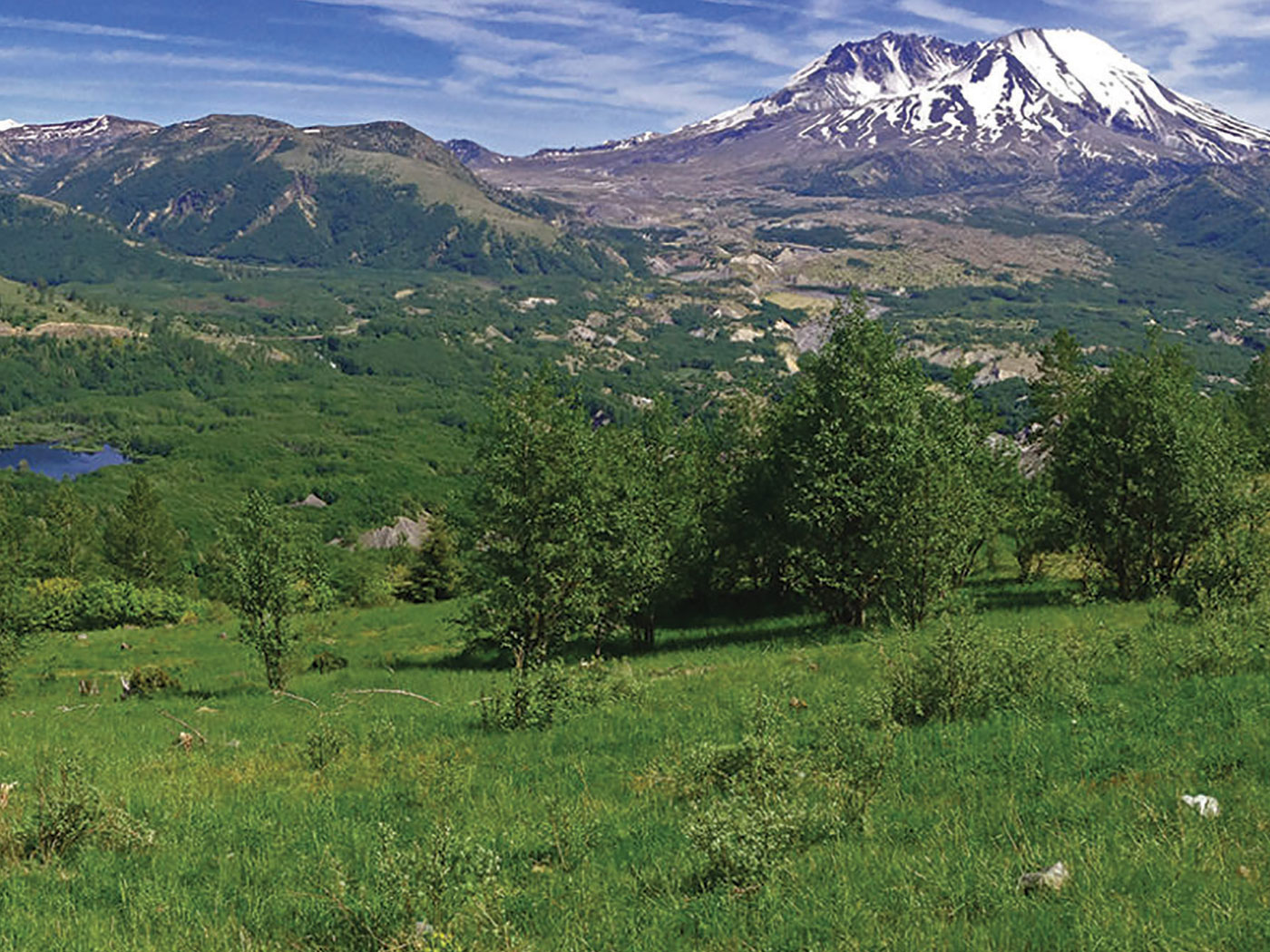Purpose
Nothing put a damper on uniformitarianism like the Mount St. Helens eruption did on May 18, 1980. Prior to this eruption, strict uniformitarianism reigned supreme in geology. The influence of James Hutton and his concept of deep time had trickled down to the smallest details.1 But the results of the Mount St. Helens catastrophe changed all of that, and ICR scientists were there leading the charge.
Methods
ICR’s research method involved making direct field observations. ICR scientists, led by geologist Dr. Steve Austin, visited Mount St. Helens several times following the initial eruption in 1980 and again after the smaller 1982 eruption. They even dove into Spirit Lake to study the post-eruption log mat.
Results
The ICR scientists’ results demonstrated that up to 400 feet of new strata formed at the volcano during the 1980 eruption.2 These deposits originated from air fall, pyroclastic flows, landslides, and even stream water. Dr. Austin and his team discovered that finely laminated deposits can be produced in a very short time period. Previously, laminated strata were thought to take many years to form, with possibly one layer laid down every year. Instead, ICR scientists found that a 25-foot-thick, finely laminated unit was deposited in a matter of hours.2
Secondly, the scientists observed that erosion can occur quickly. Scour from the steam blast, ash flows, and mudflows rapidly reshaped the landscape surrounding the volcano and its waterways. The North Fork of the Toutle River changed course following the 1980 eruption because it was blocked by nearly a cubic mile of debris.2
After another smaller eruption on March 19, 1982, a mudflow from melted snow and ice carved a new 140-foot-deep canyon down the flank of the volcano. 2 This “Little Grand Canyon” is an approximate 1/40th-scale version of Grand Canyon, demonstrating the scouring power of water. Creation geologists frequently use this as an analogy to explain the rapid formation of the larger Grand Canyon. Erosion can be fast under the right conditions. The global Flood provided ample water to carve canyons and erode mountains in a short amount of time.
ICR scientists also noted that the massive landslide that initiated the eruption in 1980 sent about 680 million cubic yards of material into nearby Spirit Lake. This caused a gigantic tsunami that ripped across the hillsides north of the lake.3 The lateral blast and water wave sheared off an estimated one million fully grown trees near their bases, transporting the logs back to the lake as the water receded.
Many of these trees were found floating upright with the heavier ends down. In 1985, it was estimated that more than 19,000 upright logs had settled on the floor of the lake.2 Dr. Austin dove into the lake and discovered that many of the trees were standing at various levels in the mud, giving the appearance of deposition at different times. But all of these trees were washed into the lake at the same moment. These observations explain the multiple layers of upright petrified trees found at different stratigraphic levels at Specimen Ridge in Yellowstone National Park.3 The trees at Spirit Lake demonstrate that all of these petrified trees could have formed at about the same time, merely sinking into different layers.
Impact
Mount St. Helens has provided over 40 years of empirical data that support catastrophism and refute uniformitarianism. The eruptions have changed the way evolutionary scientists view Earth’s geologic processes by making them more accepting of catastrophism. And creation scientists can still use Mount St. Helens as an outdoor laboratory to explore the more extensive processes and results of catastrophic events such as the global Flood.
References
- Clarey, T. 2023. Siccar Point, the Shrine of Deep Time. Acts & Facts. 52 (5): 21.
- Austin, S. A. 1986. Mount St. Helens and Catastrophism. Acts & Facts. 15 (7).
- Morris, J. D. and S. A. Austin. 2003. Footprints in the Ash: The Explosive Story of Mount St. Helens. Green Forest, AR: Master Books.
* Dr. Clarey is Director of Research at the Institute for Creation Research and earned his Ph.D. in geology from Western Michigan University.





















